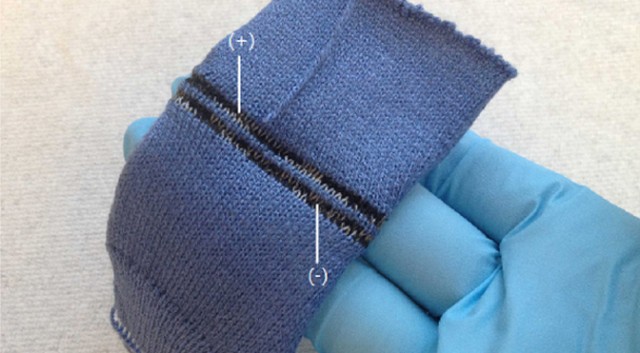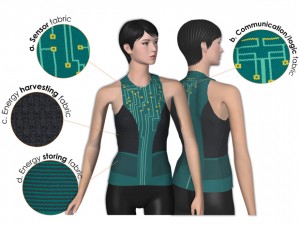Knitted supercapacitors could store power in your pants

We’ve all gotten used to carrying smart devices around in our pockets, but what if your pockets themselves were smart? Scientists have been working on smart clothing for years — and flexible circuits, sensors, and screens already exist, but what about power? Clipping a chunky lithium-ion battery to your smart pants rather defeats the purpose, doesn’t it? That’s why engineers at Drexel University and the US Naval Academy have devised a way to create knitted fabric that can store power.
The key to this advancement is integrating carbon atoms into different types of yarn, which can then be used to make clothing. Most current attempts at smart clothing have external power and processing. It’s really just the sensors (usually fitness-oriented) that are embedded. This supercapacitor material could be used to provide power to smart garments bristling with sensors or touchscreens without the added bulk of a separate battery pack.
Fabric-like materials capable of storing power have been demonstrated in the past, but they tend to be very expensive and rely on material that’s difficult to handle. A project from a team of US and Chinese researchers last year accomplished this with graphene and carbon nanotubes. That’s great for a laboratory environment, but we aren’t even sure yet that carbon nanotubes are completely safe yet. You certainly can’t build clothing out of them yet, even if the cost was reasonable.
future fabricThe activated carbon used in the new Drexel was embedded in the fabric with a process called natural fiber welding (NFW). This technique involves coating a cellulose-based yarn made from cotton, linen, bamboo, or viscose with an ionic liquid. This allows carbon atoms to bind the the structure. It’s a multistep process, but the team was able to build a NFW machine that spits out carbon yarn by the meter.

According to the researchers, the cost of ionic liquids in the NFW are the most expensive part of the productions process. If there is demand for this material, that would be the limiting factor in scaling up to an industrial scale.
The amount of power fabric made from this yark can store is not terribly high, certainly nowhere near lithium-ion batteries of the same volume. A sheet of fabric supercapacitor about the size of the back panel of a sweater (3000 square cm) could store the same power as a small coin cell battery. Garments made from this material would need their own energy harvesting technology, perhaps based on body heat or movement. If you can continually replenish the charge in the superconductor fabric, you could power an array of low-power electronics.
